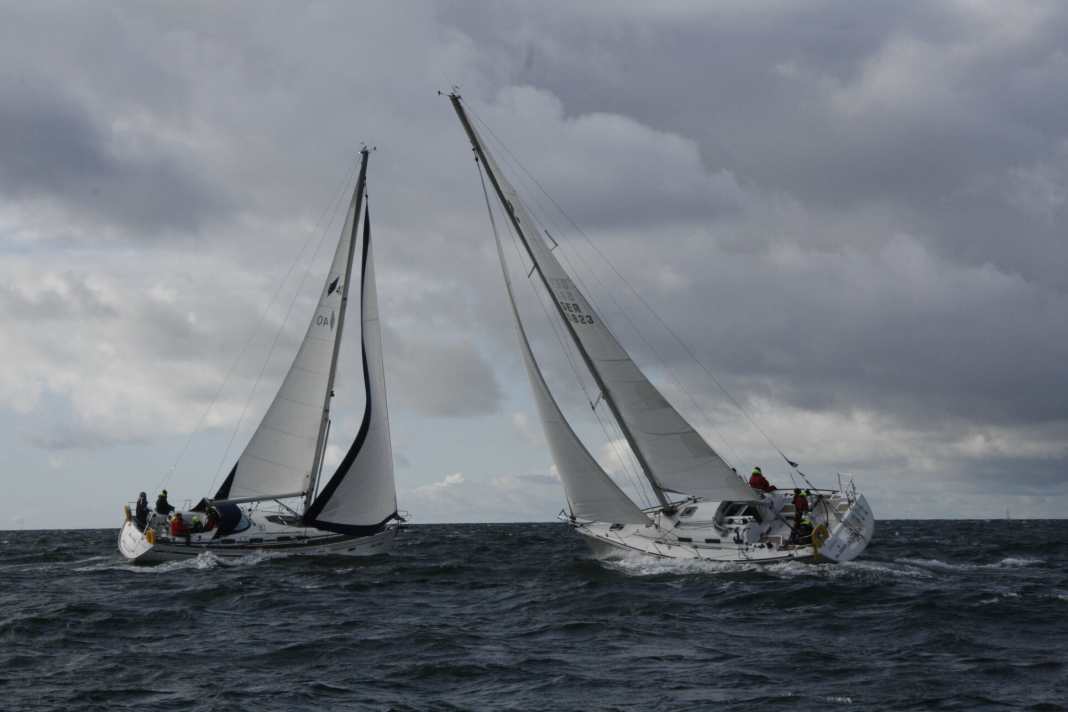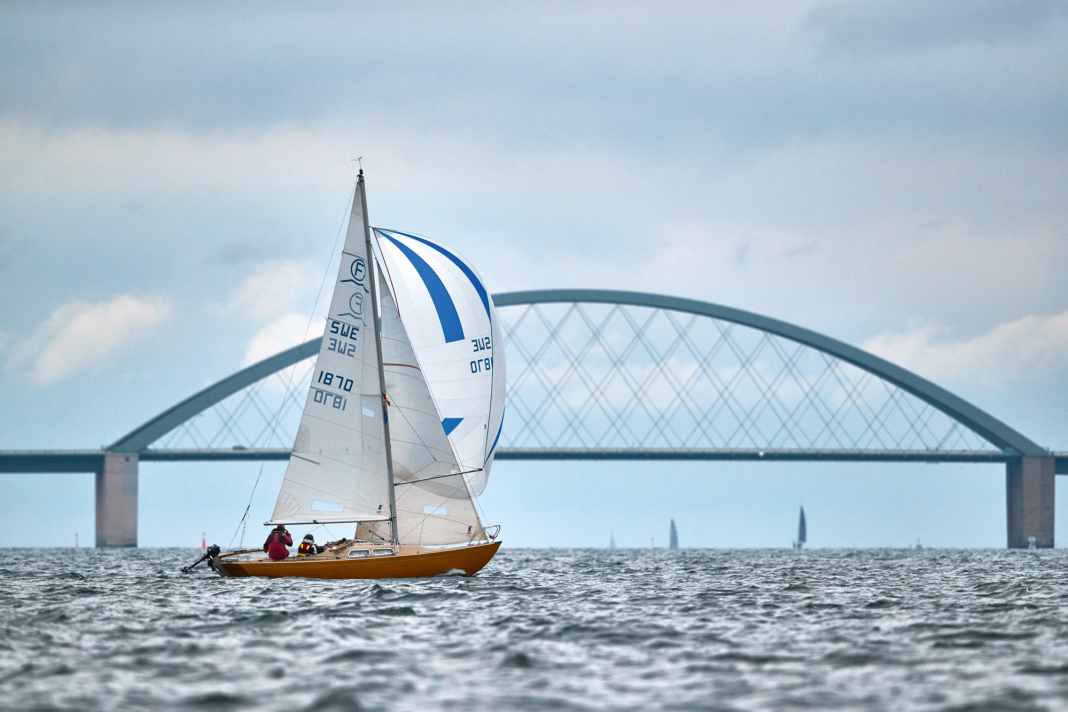





- Unusual temperature contrasts
- Heatwave in the Mediterranean region
- Subjective feelings and scientific findings
- Weather data records from 30 years analysed
- Surprising trends visible
- Clearest changes at the Kiel Lighthouse station
- More wind everywhere
- Lows as opponents
- Prolonged weather conditions
Either too little wind or too much. And then from the wrong direction. Sentences like this are often heard not only on the jetty. The topic is also hotly debated in online forums and water sports groups.
People are always happy to talk about the weather, but at the moment the scene is very preoccupied with the persistent and, for many, apparently unusual strong westerly winds. However, the situation is not quite so unusual, at least not the wind direction. Both the North Sea and the Baltic Sea are located at a latitude where cool air masses from the north repeatedly meet warmer to hotter air masses from the south. A mixture of the two harbours the risk of strong lows and weather fronts.
Unusual temperature contrasts
It is therefore in the nature of things that, due to the temperature contrasts, the lows that form in the Atlantic also find their way to us. The stronger the contrasts, the stronger the lows and therefore the stronger the winds can be. We notice this particularly in the autumn and winter months with the storms, as the contrasts with the very cold polar air are even greater here.
But even in the current phase, the differences can be large. Because when temperate air masses with values between 15 and 20 degrees meet hot and now even very hot values from the south with 30 to 40 degrees or even more, there is enough energy in the atmosphere to significantly increase the intensity of the lows. This also increases the wind speeds. The ingredients for stronger winds are therefore in place. Always in conjunction with a westerly wind direction.
Heatwave in the Mediterranean region
We've not only heard about the heatwaves in the Mediterranean region, we've also felt them ourselves at the end of June and beginning of July with temperatures of almost 40 degrees in Germany. And after the last short heatwave, the weather quickly became changeable again, and above all very windy.






The lows drew their energy precisely from this warmth before the weather change and continue to do so to some extent. Because when so-called low complexes form over Scandinavia, we actually only feel cooler air and a lot of wind from the north-west on the North Sea and Baltic Sea. This is because we are then on the western side of this complex. Its eastern flank, on which the hot air from the south can be carried far to the north, tends to lie in the Baltic up to Finland in places.
If a new high then moves in from the Azores over the UK, it supports and increases the so-called gradient; the pressure difference between high and low. The equalisation between the two, and therefore the wind, is all the stronger.
Subjective feelings and scientific findings
As this interplay has been going on for a while now and no sustainable high over Central Europe or Scandinavia has yet established itself, we keep seeing these windy phases, mainly from a westerly to north-westerly direction. However, human perception should not be disregarded. After all, this phase with the wind is not that unusual.
More on the topic:
In addition, we had an extremely high number of low-wind days between February and May. High-pressure systems appeared again and again over central and northern Europe, giving us plenty of sunshine and hardly any wind. A long period of time that people can quickly get used to. If the weather suddenly changes again after such a long period, it may be perceived as very unusual.
In order to draw a clear picture, my colleagues and I analysed the weather data from various stations along the Baltic Sea. We focussed on the sailing season, i.e. the months of May to September. We looked at the stations at Arkona, Rostock-Warnemünde, Fehmarn, Kiel Lighthouse and Glücksburg-Meierwik.
Weather data records from 30 years analysed
Kiel Lighthouse is the only station in the middle of the water. Moreover, not all stations have been recording for the same length of time. Some have been collecting weather data since 1978, while others have only been recording hourly values since 1996. However, we can collect around 30 years or more at all stations to obtain a well-founded climatic picture.
In order to remind ourselves of the initial sentence about too little or too much wind, we looked at hours with less than 6 knots of wind (under 3 Bft) and phases with more than 21 knots (from 6 Bft). However, we are only looking at the average and therefore steady wind here. Gusts are not included in the data sets. We have also looked at the wind directions.
Surprising trends visible
Based on the values determined, it is possible to recognise interesting trends and, in particular, changes. In Arkona, for example, there are hardly any changes in the weak wind periods. However, the phases with strong winds are gradually decreasing during the sailing season. The trend is pretty clear.
An easterly wind direction also seems to have become somewhat more common in recent years, although the westerly wind direction continues to dominate; and this at almost all stations.
There are also fewer strong wind phases in Rostock-Warnemünde. Here, however, the wind direction in particular is changing somewhat more noticeably. In addition to the easterly component, the south-easterly and, in particular, the southerly direction is becoming increasingly important.
Clearest changes at the Kiel Lighthouse station
Fehmarn has the shortest data set, which only begins in 1996. This is the only station to show a trend towards more westerly winds, whereas the numbers of weak wind and strong wind phases are roughly equal.
Kiel Lighthouse, on the other hand, also allows more easterly winds. However, what is most noticeable here is that the westerly wind direction suffers the most and occurs less frequently. And: During the water sports season, there are more and more days with winds over 21 knots.
In Glücksburg-Meierwik, on the other hand, the westerly wind, which is also weakening, is being compensated for by a stronger northerly direction. The trend towards more strong winds but also more weak wind phases is also very interesting here. The gap is widest at this station.
More wind everywhere
What conclusions can be drawn from this data? First of all, we have seen changes in wind behaviour over the last 30 to almost 50 years. However, these are very different locally. Wind speeds in particular have tended to increase almost everywhere, with wind speeds of over 21 knots.
In some cases, we are also seeing an increase in weak wind phases. What all stations have in common is that wind directions other than the usual ones are occurring more frequently. Often there are more easterly winds, occasionally also more from the south or north.
To put this behaviour into context, we need weather conditions that cause it. And here we see a pattern that fits: High pressure systems are appearing more and more frequently on the European weather map!
Lows as opponents
The highs do not always have to be directly over Germany. For example, if the high stays over Scandinavia, it brings easterly winds to the Baltic and North Sea. If the low to the south of the high is sufficiently strong because it has a lot of thermal energy, this is also reflected in stronger winds.
The fact that Glücksburg sees more northerly winds and Rostock-Warnemünde more southerly winds also fits in well with the picture of the "new" positions of the highs and lows. The fact that the strong wind phases are becoming less frequent here can also be explained by the expansion of the highs, especially a Scandianvian high to the south.
Prolonged weather conditions
In particular, however, it is the longevity of the high-pressure systems that block other weather systems and thus bring us one and the same weather situation over a longer period of time. This also applies to the longer phase with stronger winds.
Further highs on the summer weather map, positioned differently, will also bring us more summery weather in the coming weeks, with certainly more pleasant wind conditions from the "right" direction. Nevertheless, we water sports enthusiasts are now also feeling the effects of the changed weather conditions - and the data proves it.

